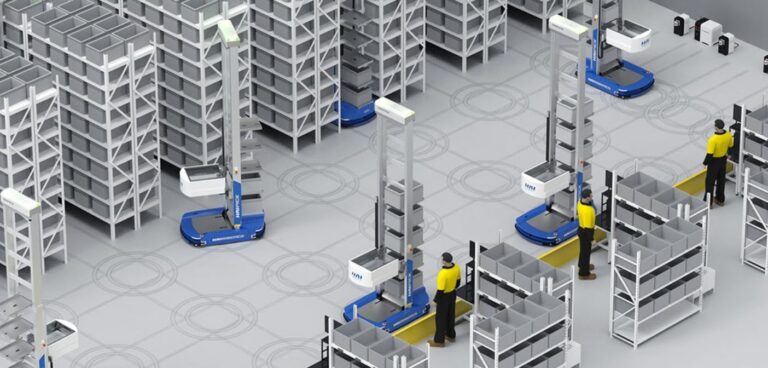Hai Robotics, a developer of autonomous case-handling robot systems, has published a report aimed at the warehouse industry named The Warehouse of the Future, which is intended to highlight the benefits of warehouse automation and address some of the sector’s key challenges.
Specifically, the report outlined the necessary features of the ‘warehouse of the future’, according to Hai Robotics. The publication cited views from CEOs, CTOs, country managers, directors and academics with expertise in warehouse management, logistics and robotics.
Some of the key focuses included how automation in warehouses might evolve in the coming years, its according impact on the workforce and sites’ environmental credentials, as well as threats to the industry and opportunities for commercial growth.
Brian Reinhart, vice president of sales, marketing and aolutions at Hai Robotics, said: “Warehousing is undergoing a dramatic transformation as the age of automation enables ever more ingenious solutions.
“However, our report highlights the work that still needs to be done to maximise the potential of automation if technology like ours is to become accessible across the market.”
Hai Robotics also highlighted the continued growth of e-commerce and global labour shortages, and suggested firms will need to turn to automation and other new technologies to maintain speed and accuracy in their operations, especially when bringing in new staff isn’t possible.
In the face of increasing logistics challenges associated with the e-commerce boom, Hai Robotics points to how agile robotics solutions can support organisations to be more ‘tailored and efficient’ at meeting customer needs.
The robotics firm likewise referenced case studies looking at the rapid development of automated technologies, and suggested that the adoption of them has the potential to double.
What’s more, the publications suggests larger companies are growing their robot fleets to address these difficulties, with vendors relying on the flexibility and efficiency of automated solutions to remain competitive and offer a range of delivery and returns options.
Mainstream adoption of automated solutions, the report claimed, could lead to both increases in storage density by 130% and the improvement of putaway rates by up to 800%.









